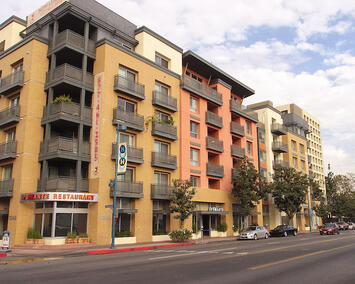
Paul Krugman needs to learn some geography. Last week, he wrote, “there’s no more room for housing” in California unless they build up. After all, he notes, “San Francisco is on a peninsula, Los Angeles is ringed by mountains.”
Yes, San Francisco is on a peninsula. But, immediately to the south of the city is San Mateo County, which — according to census data — is 68 percent rural open space. South of San Mateo is Santa Clara County, home of San Jose, which is 74 percent rural.
Krugman may not know that there is bridge called the Golden Gate that connects San Francisco to Marin County, which is 84 percent rural open space. Another bridge called the Bay Bridge connects San Francisco to Alameda and Contra Costa counties, which are 63 and 57 percent rural open space. Between all of these counties together, more than two-thirds of the San Francisco Bay Area is rural open space.
In Los Angeles, a study funded by the state of California found that more than 800,000 acres of Los Angeles, Orange, and Ventura counties are potentially developable. Over the hill, but a short drive away from Los Angeles, Riverside and San Bernardino counties have millions of acres of developable land.
Krugman also needs to learn some construction economics. He thinks that, because people in Manhattan live in mid-rises and high-rises, everyone else should be able to do so. But not everyone else is a Nobel-prize winning professor and most people can’t afford to live in such expensive buildings. As California developer Nicholas Arenson testified at a meeting on housing prices, mid rises (four to seven stories) cost three to four times as much while high rises (eight stories and up) cost 5.5 to 7.5 times as much per square foot as single-family homes.
Moreover, most people don’t want to live in apartments or condos. As an economist, Krugman should know something that is fundamental to economics: personal preferences count. Numerous surveys show that around 80 percent of Americans of all age groups prefer single-family homes over living in mid-rise or high-rise apartments.
A Gallup poll conducted shortly before the pandemic found that 40 percent of Americans who live in big cities would rather live in smaller towns or low-density suburbs, while more Americans want to live in suburbs and exurbs than actually live there. The pandemic has heightened these desires.
So if people would rather live in single-family homes, why are so much of the San Francisco Bay and Los Angeles areas still rural? The answer is that, forty to fifty years ago, some people who didn’t understand geography and thought that California was running out of land drew urban-growth boundaries that put all of those rural areas off-limits to development. Under California law, once drawn such boundaries are practically impossible to move.
Thanks to the artificial land shortages created by these growth boundaries, urban land in the San Francisco and Los Angeles areas is ten times more expensive than land in urban areas that don’t have such boundaries. When combined with the added costs of building mid-rise and high-rise housing, it is clear that density only makes housing more expensive, not more affordable.
Read the rest of this piece at The Antiplanner.
Randal O’Toole, the Antiplanner, is a policy analyst with nearly 50 years of experience reviewing transportation and land-use plans and the author of The Best-Laid Plans: How Government Planning Harms Your Quality of Life, Your Pocketbook, and Your Future.
Photo credit: Junkyardsparkle via Wikimedia.













Geography
O'Toole offers good information. But I think he misses a point. He notes Forty or fifty years ago California created urban-growth boundaries resulting in land shortages for development and building of high rises.
I contend that this was done on purpose by politicians who want to concentrate power in the big cities. I suggest that light rail, subways and the like are promoted for the same reason.
In a country as large as ours with as much rural land available there is no excuse for average housing prices to be so large. $800,000 in California I understand.